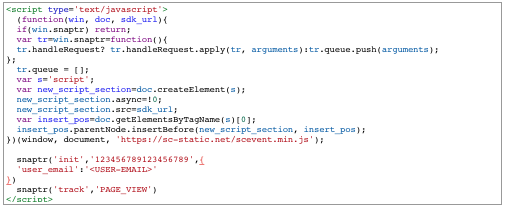With Snapchat leaving the closed beta phase on its Snap pixel behind, it is time for an update on this feature. In this small post we are taking a closer look to how advertisers can capitalize on the growing presence of measurability within the platform.
The introduction of the Snap pixel was something avid Snapchat advertisers have been longing for quite some time. With both its self-service platform and the snapchat pixel, Snapchat clearly shows signs of shifting away from focusing solely on those big branding advertisers and welcomes advertisers who are more performance driven.
What is the Snap pixel?
First, let’s explain what the Snapchat Pixel is. In short, the Snap pixel is a piece of code that allows Snapchat advertisers to have actions taken on their websites be attributed to their Snapchat advertising campaigns. Under actions, we can understand for example leads & conversions such as filling out a contact form or even making a purchase.
Advantages of Snap pixel integration
More qualitative measurement & optimization
The key advantage of implementing a Snap pixel is of course more qualitative measurement. Here, Snap is still a relatively new advertising player who follows in the footsteps of other platforms such as Facebook, Google AdWords, Doubleclick,... who have have been using this form of tracking and measurement for some time.
Let’s, for example, say we sell shoes and we decide to run an advertising campaign on Snapchat to drive shoe sales in our webshop. Conversion tracking, using the Snap pixel, will now allow us to more accurately assess sales performances during and post-campaign.
This means that the real value now lays in reporting that moves beyond standard metrics available such as number of view, swipe ups etc. In the case of the shoe store, we can now assess more valuable KPIs such as our Return on Investment (ROI) / Return on Ad Spend (ROAS) and cost per pair of shoes sold that provide more concrete business information.
Performance driven budget distribution
Following on the above, ultimately, as an advertiser, identifying where we can get the optimal (lowest) cost to drive product/service sales is a large step forward when deciding on budget distribution. By tracking relevant actions (leads, conversions) attributed to campaigns across different advertising platforms we have the possibility for more valuable comparison and thus allocation of said budgets.
Of course on the level of targeting, budget can be optimally allocated as well. Here below an example of events split over for example devices & OS.
![]()
What types of actions can you track?
At this point in time Snapchat provides standard events that can be tracked using the pixel. This ranges from your standard page views to signup events as well as e-commerce purchase events. A list can be found here below.
![]()
However, it is worth noting that these are standard events that can be tracked. With some knowledge of tag management systems, more customized events can be tracked easily.
In the platform itself, it is possible to quickly switch between different events tracked.
![]()
Unfortunately, app install tracking did not make the list yet. Nonetheless, the possibility to track apps through the advertising platform is there via workarounds. Third party tracking tools will need to be utilised in order to effectively measure these installs for now.
How to setup Snapchat conversion tracking?
Setting up the Snap pixel runs very similar to the Facebook pixel setup and it’s recommended to make use of a tag management system to do so. More information on the technical implementation of the pixel can be found in the Snapchat business help center
The Snap pixel separates itself into two pieces of javascript code:
- One standard base pixel to track page views:

- Event javascript code (here for example purchase)

Remarketing audiences
At this point in time, building remarketing audiences based on the Snap pixel events for your advertising campaigns is not yet available. Nonetheless, when opened up this could be the first stepping stones towards building remarketing strategies for Snapchat using funnel flows or even dynamic product remarketing.
Summary and conclusions
In short it is interesting to see the direction Snapchat is moving in with their updates to their advertising platform. What you should take away from this article:
- Shift of large branding to performance driven advertising becomes more highlighted
- Allows for more qualitative measurement and budget allocation
- Standard tracking possible, not yet app tracking (only 3rd party)
- Remarketing audiences are not available but should be coming in the future.



